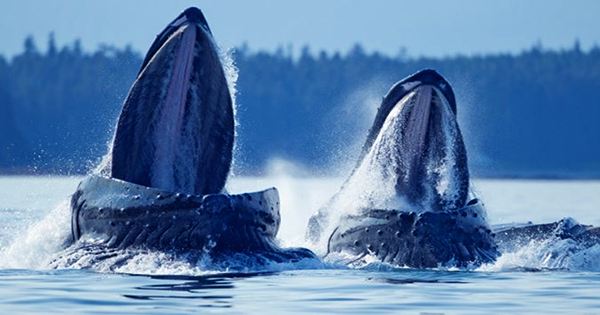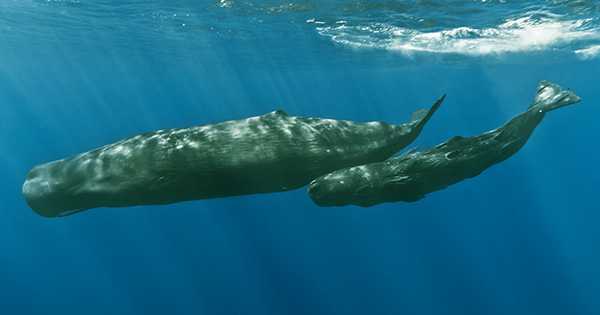Photographers have captured the first images of two humpbacked whales mating. When they showed their tape to a marine mammal expert, she confirmed that both participants were males, proving once more that same-sex sexual behavior is common in animals. However, it is unclear whether both whales were pleased with the circumstances.
Whales are large, but the ocean is larger, so they have plenty of space to hide if they don’t want humans to intrude on their private moments. As a result, despite being one of the most researched whale species, there has been no record of how humpbacks reproduce – until now.
Stephanie Stack, a Pacific Whale Foundation student, was approached by two photographers who had photographed two humpback whales while on a leisure trip off Maui. Lyle Krannichfeld and Brandi Romano approached Stack because they felt they had something uncommon, but they had no idea how unique their finding was. Not only was it a first, but they had witnessed same-sex coupling.

“Despite being well studied for decades, the sexual behavior of humpback whales has remained mostly a mystery until now,” Stack stated in an email to IFLScience. “This discovery defies our assumed beliefs about humpback whale behavior. While we have long understood these extraordinary creatures’ complex social structures, experiencing the copulation of two male whales for the first time is a one-of-a-kind and unforgettable experience.”
Stack and other researchers want to increase the number of observations of humping humpback whales, including determining how common same-sex encounters occur as a proportion of overall copulation. Was it a coincidence that the first recorded humpback sex was between two guys, or are such encounters as prevalent – if not more so – as those between males and females? Evidence for the latter includes a forty-year-old story of a subadult male stroking his penis against an adult male’s genital slit. In that circumstance, any copulation would take place outside of human sight.
Humpback whales eat in polar waters throughout the summer in the appropriate hemisphere before migrating to the tropics for the winter, when they give birth and rear their young. If, as projected, most sex occurs in warmer seas, we should have a better chance of catching whales in the act. So far, however, instances of penis extrusion, in which cetaceans compromise hydrodynamics for mating preparation, are uncommon for humpback whales.
Intriguingly, the few occurrences of penile extrusion seen included five reports of humpback whales aiming their penises at other males. However, four of them included males vying for access to a viable female, so we may have witnessed a true dick-waving contest in which one whale attempted to assert dominance.
“In male cetaceans, homosexual activity can involve the insertion of the penis of one male into the genital slit,” Stack and co-authors write in their study on the incident. Previous observations have focused on smaller, more frequent animals, such as the famously horny bottlenose dolphins.
While some may argue that male whales get it on because it feels good, experts prefer evolutionary theories. “The purpose for nonreproductive behavior is varied; proposed functions include learning or practicing reproductive behaviors, establishing or reinforcing dominance relationships, forming social alliances, and/or reduction in social tension,” according to the report.
If the reason we haven’t seen humpback copulation before is that they avoid humans when it occurs, this pair was the exception. They approached the photographers’ boat and circled it several times while the copulation was occurring.
Unfortunately, this could be the result of a non-consensual engagement rather than exhibitionism. One whale, A, was unhealthily emaciated and parasite-infested, most likely due to a ship strike to his jaw.
Images of both whales’ tail flukes were posted to the Happywhale.com database, allowing researchers to identify them. Whale B has been in the database since 1993, indicating that age does not limit humpback sexual activity. Images of their genitals were also put into the database; online whale privacy is not yet considered a thing.
Accounts of same-sex sexual activity, as well as other “deviant” activities, were formerly concealed by scientists concerned about the ramifications for the public. However, they have already been identified in so many species that some experts believe the norm may be what we call bisexuality.















